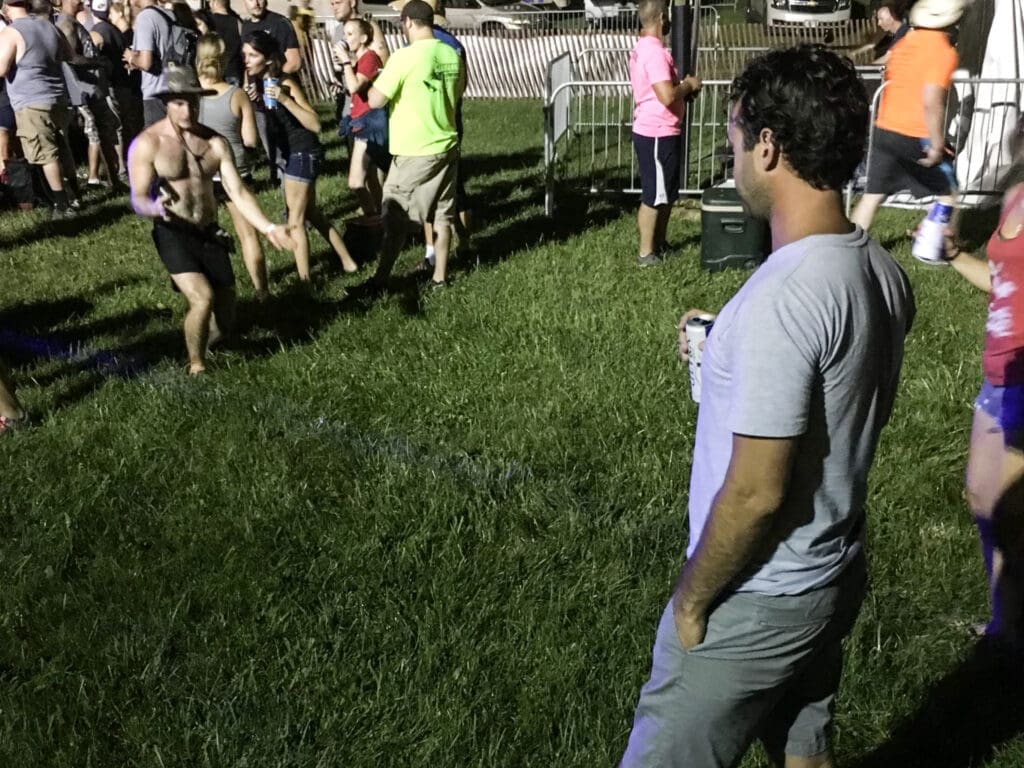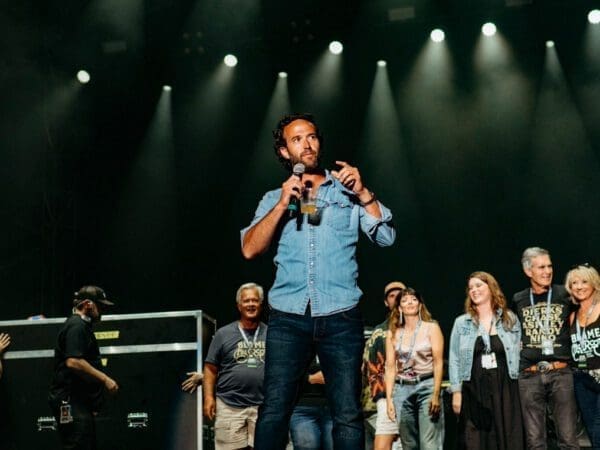
(Publisher’s Note: This is the first of two chapters in this series about the history of the legendary Jamboree in the Hills country music festival in Belmont, Ohio. The multi-day event always was scheduled for the third week of July – this weekend – at two locations in Belmont County, and the four concerts drew more than 100,000 fans to the rolling hills of East Ohio each July.)
It was absurd and unthinkable, and it was the impossible made possible. It was a phenomenon, a right of passage, an exposition of rarity, and an everyday parade of the preposterous, the staggering, and of the spectacular.
It was the eighth (sing-a-long), ninth (intoxication), and 10th (celebration of America) wonders of the world, and that’s why Jamboree in the Hills was the golden ticket in the Upper Ohio Valley for 40 years.
And it was all ours, or so we thought until everything that made it great caused it to come to an end.
Let that sink in.
Jamboree in the Hills was launched at Brush Run Park in 1977 as a weekend festival of country music, and star after star appeared at the module concert venue in the middle of the east Ohio farming community. Johnny Cash, Loretta Lynn, and Slim Lehart got it started, and Travis Tritt, the late Toby Keith, Gretchen Wilson, and Neil McCoy finished 40 decades’ worth of country music tradition.
“But I’ve always said Jamboree in the Hills wasn’t really a concert or a festival,” said Kelly Tucker, the festival’s final general manager who now is in charge of Wesbanco Arena and the Capitol Theatre. “It was a gathering of family friends from near and far, and they listened to the best country music out there.

“Sure, the people came to Jamboree in the Hills because they enjoyed the music, but mostly they enjoyed each other, and that’s why it was what it was to the people of this valley,” she insisted. “It was the people who made it very, very special for everyone.”
It began as a two-day event, expanded to three days, and then became a four-day Super Bowl of Country Music in 1990 when moving to the acreage across from the Valley View Campground in Belmont.
“It started as a country music festival, and it was advertised as a country music festival because that was the idea because of the success of Jamboree USA shows at the Capitol Music Hall,” Tucker explained. “But it grew into a reunion; a family reunion that people planned their summers around. That third week in July became that important.”
Festival ownership changed during those four decades, and so did every single financial aspect involved with managing and producing a four-day music festival on a 210-acre campus where the concerts and the camping took place. Security, the medical tent, sound, lighting, video, stage production, pyrotechnics, and property maintenance were some of the biggest line items on the ledger, but the price tags on the big names called for million-dollar paychecks.
“In the very beginning, all of the best country stars came to Jamboree in the Hills because it was the first of its kind in this area. There were other shows, but not around here, and not like the Jamboree because it gave them the most exposure to sell their records,” Tucker said. “And that meant a lot to the fans, too.
“When I worked the box office out front, I remember there were people who came to us who had saved their change all year to buy their ticket. And that’s what they paid us with, their change. Dimes, quarters, nickels,” she said. “They just wanted to be a part of it; of what was taking place every year in front of that barn. They wanted to be in the middle of it because that’s how special it was,” she explained. “It really did become a family tradition.”

Pop a Squat
Truly, it was a sea of humanity.
Waiting at the gate for the coolers to get cleared, and standing in line for one of a plethora porta potties, and don’t forget the thunderstorms and those mudslides years either.
Inside the show, that is. The story of the campground across the street is another tale to tell.
That’s because tens of thousands of country music fans established their base camps in the makeshift Valley View Campground that rests to this day directly across the federal highway from the home of Jamboree in the Hills, and Chris Dutton had a front-row view as one of the family workers.
He remembers getting tips for cooler rides to the top of the hill, and he recalls the late-night after parties, the food trucks, the post-show campground bands, and even getting flashed a few times. It was his summer job description, and everyone wanted his job.
“As a kid, once school was out, we started mowing,” Dutton said. “Valley View was mostly vacant through the year so we started preparing in June, and then once July came, it was a month of full-time work. Once I got a little older, there was a lot of fun that was mixed in there, too, because the people who stayed with us were a riot. There was so much fun.

“There was a lot of customer service mixed in with operating the campground and crowd control and security were parts of it, but we built a small city out there, so we had to know about the infrastructure of the thing. The electric, the restrooms, the plumbing, and that stuff,” he said. “There were so many pieces to all of it, and the show was only four days long but it was much longer for us because they came early and stayed late. That’s when I started learning some of the business of Jamboree in the Hills.”
It was Dutton who partnered with his sister, Nina, to create Jambo’s little brother, the “Blame My Roots Country Music Festival” a few months after Live Nation changed the definition of “Hiatus” when ending the 40-year tradition in November 2018. Dutton booked Whey Jennings, Joe Diffie, Trace Adkins, and even locals like Joe Zelek and The Tim Ullom Band, he allowed coolers of beer, and a few thousand folks had a blast once again in Belmont County.
The Covid pandemic claimed the 2020 show, but the Dutton duo continued staging
“Blame My Roots” for three more years before retiring the multi-day event in favor of the sold-out “Ranch Night” with Bryan Martin and Sammy Kershaw in early June.
That’s because what was Jamboree in the Hills can not be anything else other than Jamboree in the Hills.
“We had something that was unique, authentic, original. We had a tradition built in for us, like a holiday every summer in the middle of summer. That’s what we had. That’s what we had as fans of Jamboree in the Hills. It happened for us,” Dutton said. “A ton of work went into it, and those folks that worked for Jamboree in the Hills did all of it for us because it became such an annual tradition. It became a community for the people who lived here locally, and for the people who came in from outside the area.
“If you were a fan of country music, it was the biggest country music event you would ever attend, but it was special for everyone, even the people who couldn’t stand country music,” he said. “But I don’t think we really came to appreciate Jamboree in the Hills and everything it was for everyone until it was gone. That’s usually the case, right?”
(The Best Parts Were the Worst Parts of Jamboree in the Hills – Chapter 2 will be published this evening here on LEDENews.com.)

